Mesto 3270 Series User manual
Other Mesto Paint Sprayer manuals
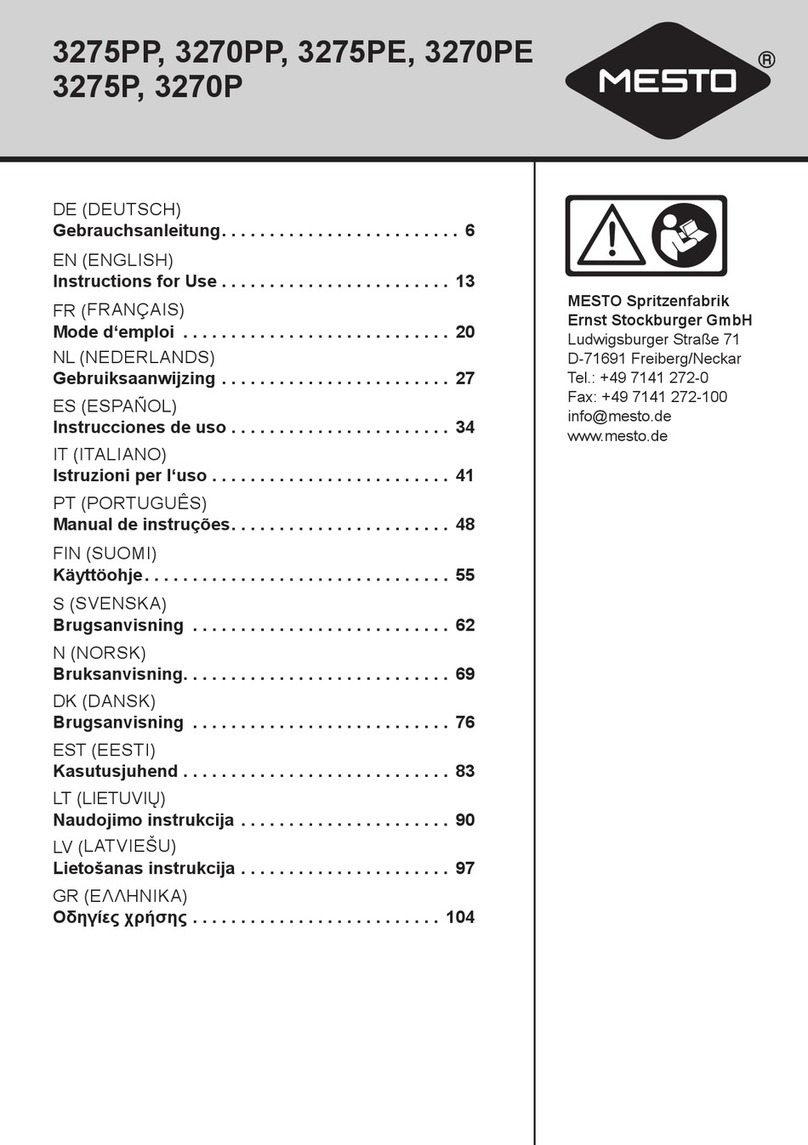
Mesto
Mesto CLEANER 3275PP User manual

Mesto
Mesto FERROX PLUS 3565P User manual

Mesto
Mesto 3230 Series User manual

Mesto
Mesto PRIMER 3237P User manual

Mesto
Mesto 3555B User manual

Mesto
Mesto 3132 Series User manual
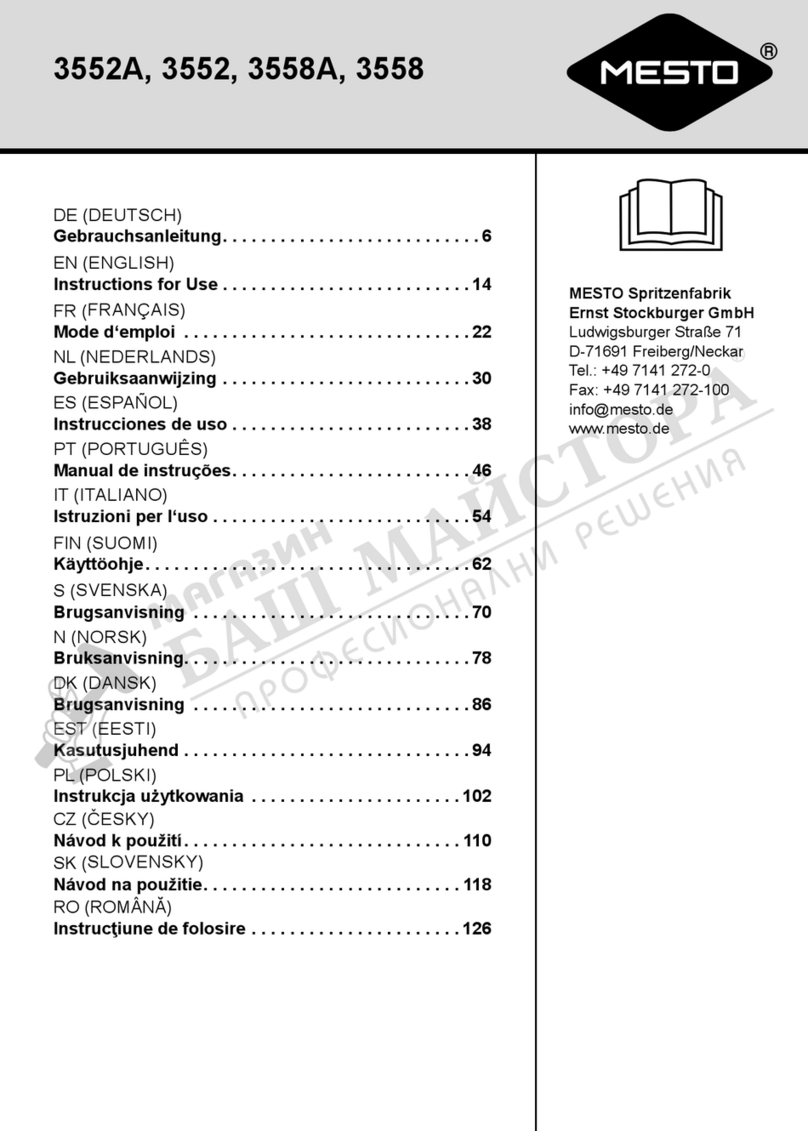
Mesto
Mesto 3552A User manual
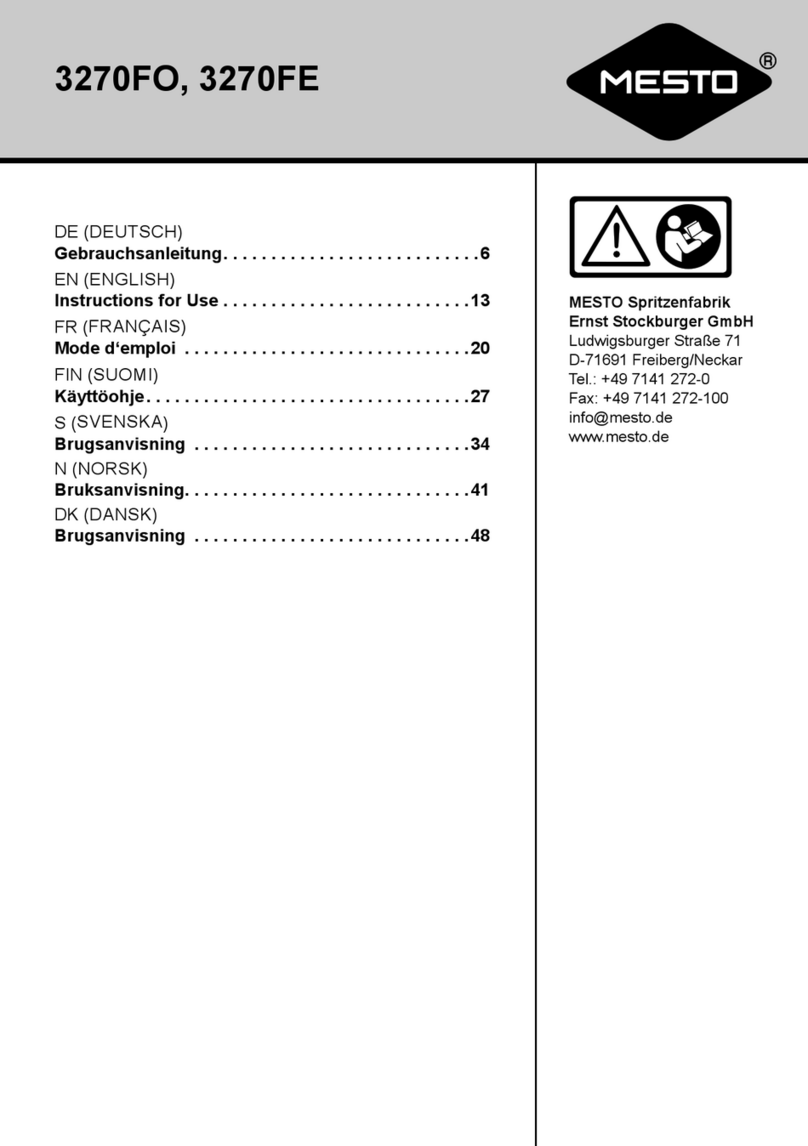
Mesto
Mesto FOAMER 3270FO User manual

Mesto
Mesto 3232 Series User manual

Mesto
Mesto PROFI 3275 User manual

Mesto
Mesto 3232P User manual
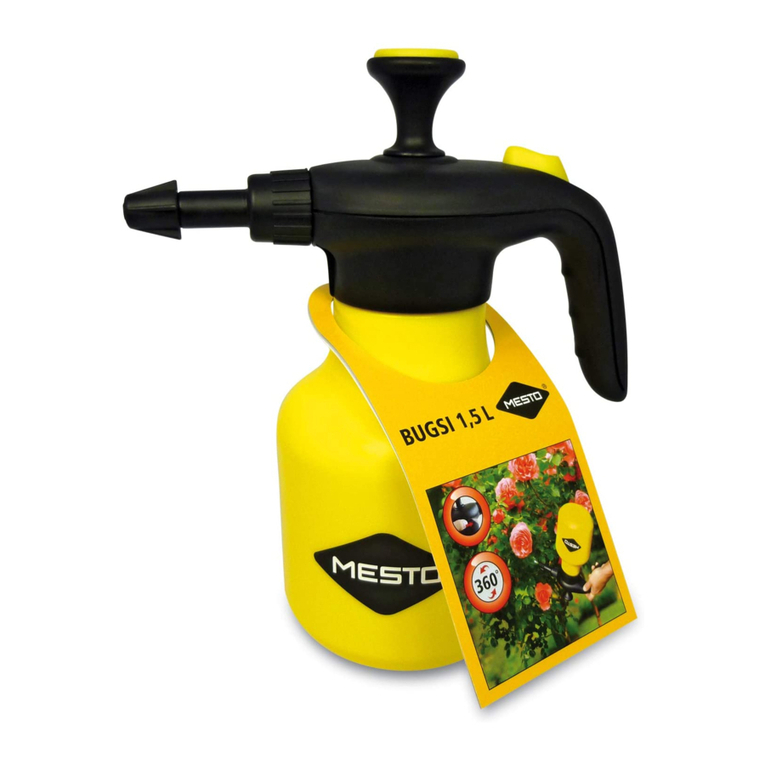
Mesto
Mesto 3132 Series Instruction manual

Mesto
Mesto CLEANER 3275PP User manual

Mesto
Mesto FERROX PLUS 3565P User manual

Mesto
Mesto 3130 Series Instruction manual
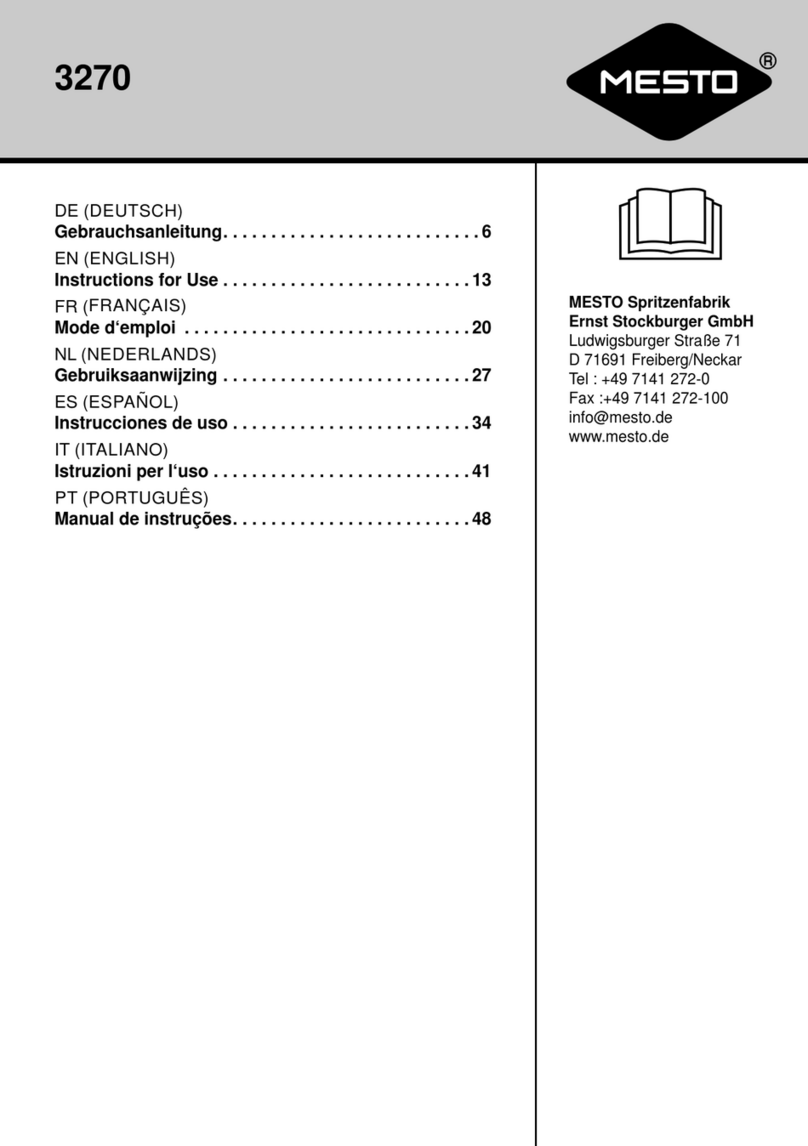
Mesto
Mesto 3270 Series User manual

Mesto
Mesto 3552A User manual

Mesto
Mesto MAXIMA 3238 User manual

Mesto
Mesto FERRUM 3560 User manual
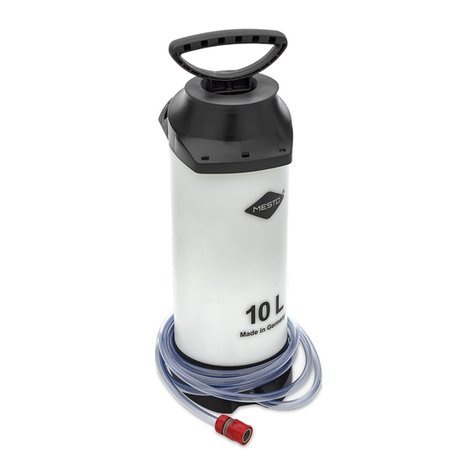
Mesto
Mesto PERLA PLUS 3265P User manual


























